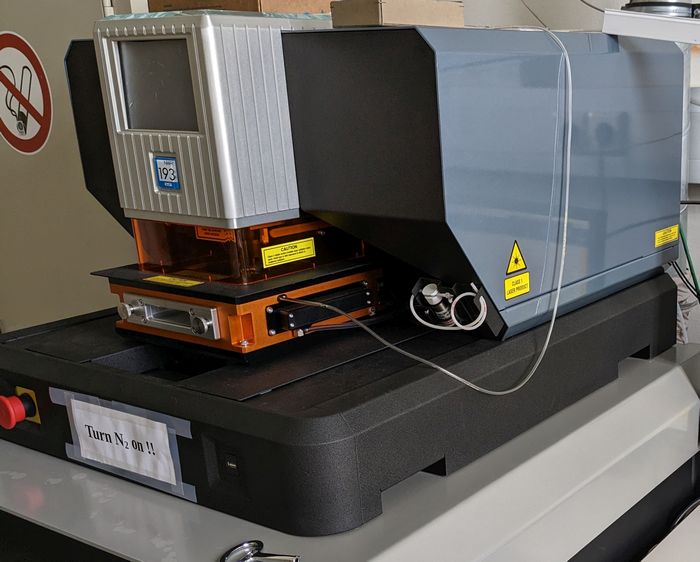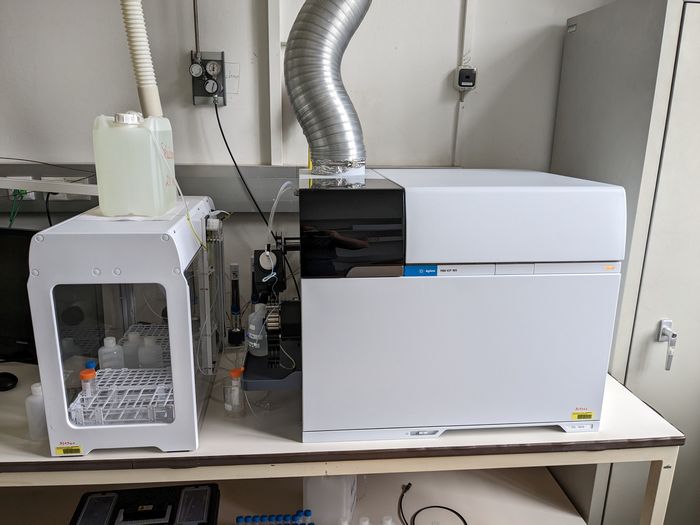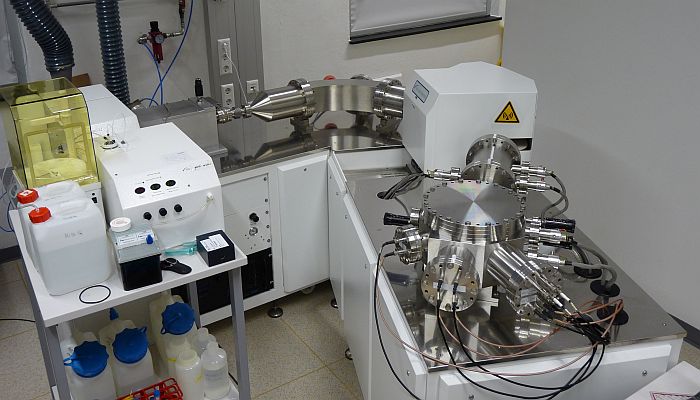The " NAWI Graz Central Lab for Water, Minerals and Rocks " laboratory is part of the NAWI Graz GeoCenter. The field of petrology and geochemistry deals with in-situ dating and trace element analysis of accessory mineral phases in order to reconstruct the history and processes of igneous and metamorphic rocks.
Devices
- Agilent 7900 Quadrupole ICP-MS (location Uni Graz)
- 2 times NWR 193 nm ArF Excimer Laser (location Uni Graz and TU Graz)
- Nu Plasma II multicollector ICP-MS (TU Graz site)
- Agilent 7500 Quadrupole ICP-MS (location TU Graz)
Principle
An NWR193nmArF excimer laser (Elemental Scientific Lasers) is used to ablate solid sample material (minerals, fossils). Typical measurement conditions are a frequency of 5-10 Hz, a flux density of 3-7 J/cm² and laser beam diameters between 2 and 75 µm. A gas flow of helium and argon transports the ablated sample material to the mass spectrometer.
Applications
The mass spectrometers with inductively coupled plasma (ICP-MS) are available for isotope analyses.
The Nu Plasma II high-resolution multi-collector ICP-MS (Nu instruments) is used for the high-precision measurement of strontium, lead, hafnium and neodymium isotopes. Another application is the U-Pb geochronology of zircon, monazite, allanite and uraninite. The Nu Plasma II MC-ICP-MS is equipped with five ion counters and 16 Faraday cups. The masses of lead and mercury (208, 207, 206, 204, 202) are measured on ion counters simultaneously with the masses 238U and 232Th on Faraday cups.
Analyzed minerals:
- Silicates (e.g.: garnet, biotite, feldspars, pyroxenes, quartz, ...), phosphates (apatite), oxides (magnetite, ilmenite, ...)
- Magmatic, metamorphic and detrital zircon
- Magmatic and metamorphic monazite, xenotime
- Magmatic and metamorphic allanite, epidote
- uraninite
Available reference materials:
- NIST610, NIST612, NIST614, MACS-3, MAPS-4, BCR-2G, BHVO-2G, various G-Probe glasses, ...
- Zrn - GJ1, 91500, Plešovice, OD3, MudTank, Temora, M257, GZ7, GZ8, Rak-17, Kara-18, SZR
- Mnz - 44069, Moacyr, Elk Mts, Madmon
- Xtm - in progress...
- Urn - Mitterberg
Application : geochronological investigation of cm-sized zircon megacrysts (D. Gallhofer)
The unusual zircons originate from a heavily weathered carbonatite in Sri Lanka. They are suitable for investigating the ablation behavior of U-poor zircons and grain-dependent variations in U-Pb age.

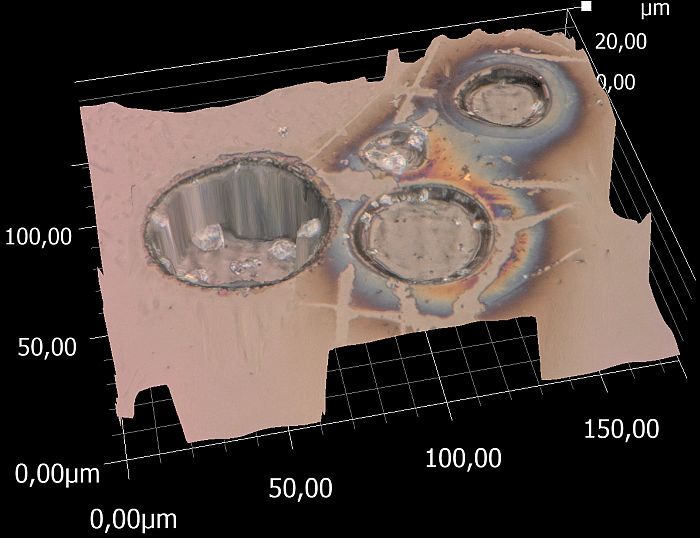
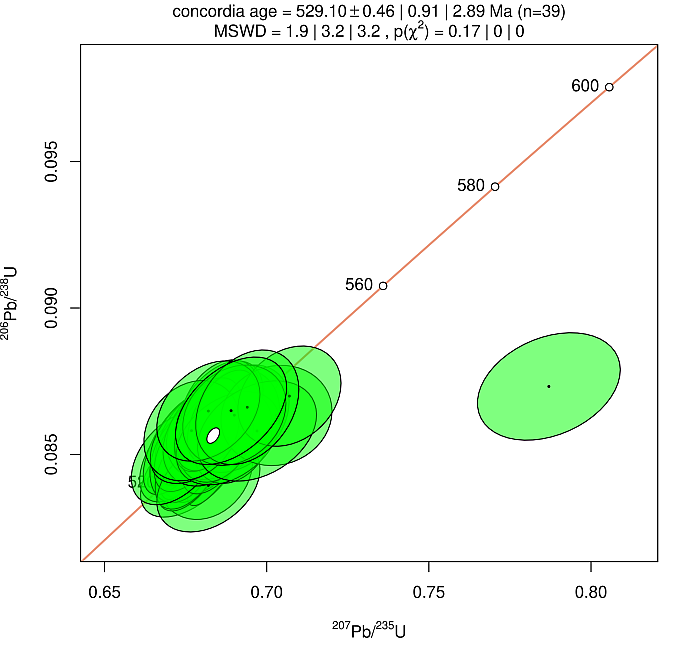
Publications
Gallhofer, Daniela; Skrzypek, Etienne; Hauzenberger, Christoph; Kurz, Walter; Möller, Andreas; Andrew, Joseph; Parra-Avila, Luis A.; Martin, Laure; Kemp, Anthony; Fernando, G.W.A.R.; He, Dengfeng
Zircon Megacrysts from the Kawisigamuwa Carbonatite, Sri Lanka - A Potential Reference Material for In Situ U-Pb and Hf Isotope Measurement.
In: Geostandards and Geoanalytical Research. 2023. 2023. doi: 10.1111/ggr.12522. doi:10.1111/ggr.12522
Nong, Anh T.Q.; Hauzenberger, Christoph; Gallhofer, Daniela; Dinh, Sang Q.
Geochemistry and zircon U\\Pb geochronology of Late Mesozoic igneous rocks from SW Vietnam - SE Cambodia: Implications for episodic magmatism in the context of the Paleo-Pacific subduction. In: Lithos. 390-391,390-391. 2021. 20pp. doi:10.1016/j.lithos.2021.106101
Brandl, Michael; Hauzenberger, Christoph. Geochemical Sourcing of Lithic Raw Materials from Secondary Deposits in South Serbia. Implications for Early Neolithic Resource Management Strategies. In: Archaeologia Austriaca. 102. 2018. 55-70.
Schantl, Philip; Hauzenberger, Christoph; Finger, Friedrich; Mueller, Thomas; Linner, Manfred
New evidence for the prograde and retrograde PT-path of high-pressure granulites, Moldanubian Zone, Lower Austria, by Zr-in-rutile thermometry and garnet diffusion modeling.
In: Lithos. 342. 2019. 420-439. doi:10.1016/j.lithos.2019.05.041
Konzett, Jürgen; Hauzenberger, Christoph; Krenn, Kurt; Joachim-Mrosko, Bastian; Stalder, Roland; Gröbner, Katharina; Sieberer, Anna-Katharina; Khoi, Nguyen Ngoc
Neogene Metasomatism in the Subcontinental Lithosphere beneath SE Asia-Evidence from Modal and Cryptic Phosphorus Enrichment in Peridotites and Pyroxenites from Southern Laos.
In: Journal of Petrology. 60,12. 2020. 2413-2448.
